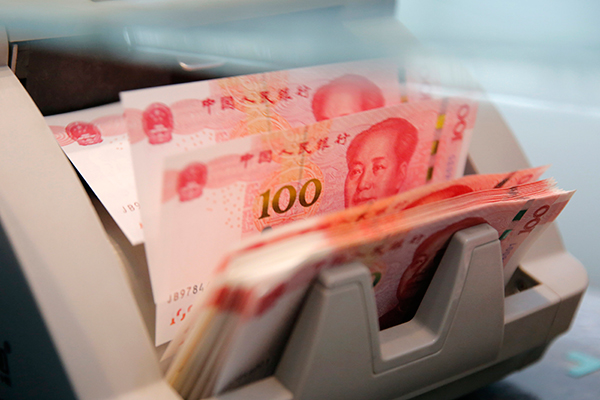Big assets to help handle financial risks
 |
|
Chinese 100 yuan banknotes are seen in a counting machine while a clerk counts them at a bank in Beijing, March 30, 2016. [Photo/Agencies] |
Large amount of government assets make China capable of coping with potential financial risks, said a research report by the Chinese Academy of Social Sciences, the country's top think tank, on Thursday.
The country's debts, however, have risen at a fast pace in recent years and deserve close attention, the report, compiled by the academy's Public and Finance Research Center, said.
China's total assets, such as land, oil, forestry, and financial assets, exceeded 125 trillion yuan ($18.8 trillion) in 2015, more than 1.8 times its GDP that year, the report said.
Despite slight fluctuations, China's asset-to-GDP ratio had remained about 1.8 times from 2010 to 2015, it said.
"The data show that China has ample and stable resources in hand to handle its debt risks," said Tang Linmin, a researcher of the center and the main author of the report.
China's overall liabilities, including shortfall in social security funds and contingent debts, rose by 70 percent to reach 70 trillion yuan from 2010 to 2015, the report said.
Tang explained that in estimating China's shortfall in social security funds, his research team has compared its own estimate with all other estimates by other researchers and used the upper-limit figure in the report.
Meanwhile, contingent debts, generally only part of which become real debts in reality, have all been treated as real debts, meaning the report has taken into consideration the worst-case scenario in assessing China's debt situation.
Still, it is obvious that despite their fast rise, the country's liabilities can be covered by the total assets, said Tang.
The Public and Finance Research Center has carried out a study on the Chinese government's balance sheet.
The study found that among the Chinese government assets, about 70 percent are financial assets, which refer to those that can continually generate economic benefits, such as land and State-owned enterprises; the other 30 percent are service assets, which refer to those that are mainly used to maintain operations of the government and provide public services and facilities.
The high ratio of financial assets indicates that the Chinese government has much leeway in using its assets to cope with financial risks, the report said.
- China sees record outbound financial assets expansion in 2016
- Sino Mercury scouting for financial assets to expand presence
- Idea on basic framework of China's deposit insurance system and its integration with financial assets companies
- China's external financial assets surpass $6 trillion
- Perfect a unified and function-based management on central government assets









